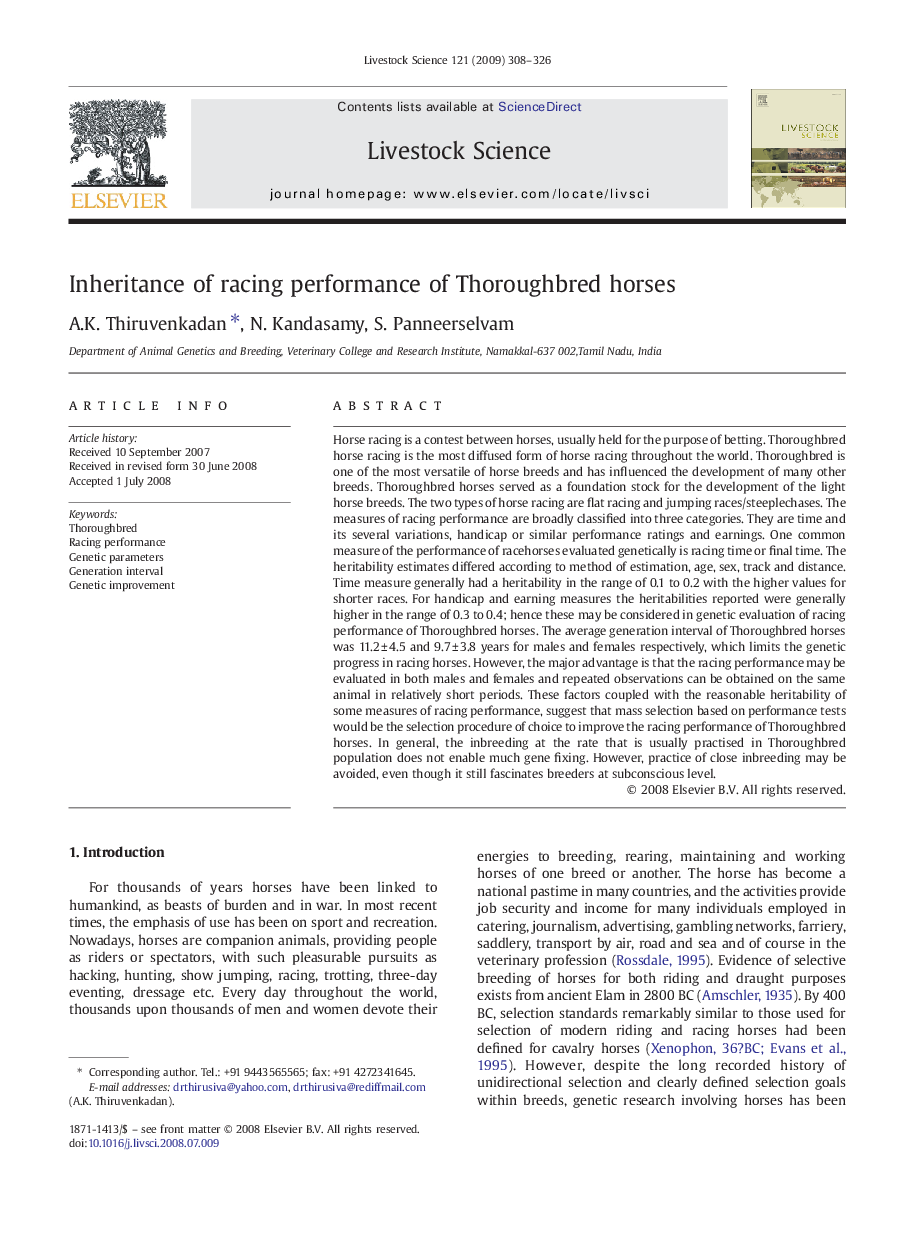| کد مقاله | کد نشریه | سال انتشار | مقاله انگلیسی | نسخه تمام متن |
|---|---|---|---|---|
| 2448279 | 1554011 | 2009 | 19 صفحه PDF | دانلود رایگان |

Horse racing is a contest between horses, usually held for the purpose of betting. Thoroughbred horse racing is the most diffused form of horse racing throughout the world. Thoroughbred is one of the most versatile of horse breeds and has influenced the development of many other breeds. Thoroughbred horses served as a foundation stock for the development of the light horse breeds. The two types of horse racing are flat racing and jumping races/steeplechases. The measures of racing performance are broadly classified into three categories. They are time and its several variations, handicap or similar performance ratings and earnings. One common measure of the performance of racehorses evaluated genetically is racing time or final time. The heritability estimates differed according to method of estimation, age, sex, track and distance. Time measure generally had a heritability in the range of 0.1 to 0.2 with the higher values for shorter races. For handicap and earning measures the heritabilities reported were generally higher in the range of 0.3 to 0.4; hence these may be considered in genetic evaluation of racing performance of Thoroughbred horses. The average generation interval of Thoroughbred horses was 11.2 ± 4.5 and 9.7 ± 3.8 years for males and females respectively, which limits the genetic progress in racing horses. However, the major advantage is that the racing performance may be evaluated in both males and females and repeated observations can be obtained on the same animal in relatively short periods. These factors coupled with the reasonable heritability of some measures of racing performance, suggest that mass selection based on performance tests would be the selection procedure of choice to improve the racing performance of Thoroughbred horses. In general, the inbreeding at the rate that is usually practised in Thoroughbred population does not enable much gene fixing. However, practice of close inbreeding may be avoided, even though it still fascinates breeders at subconscious level.
Journal: Livestock Science - Volume 121, Issues 2–3, April 2009, Pages 308–326